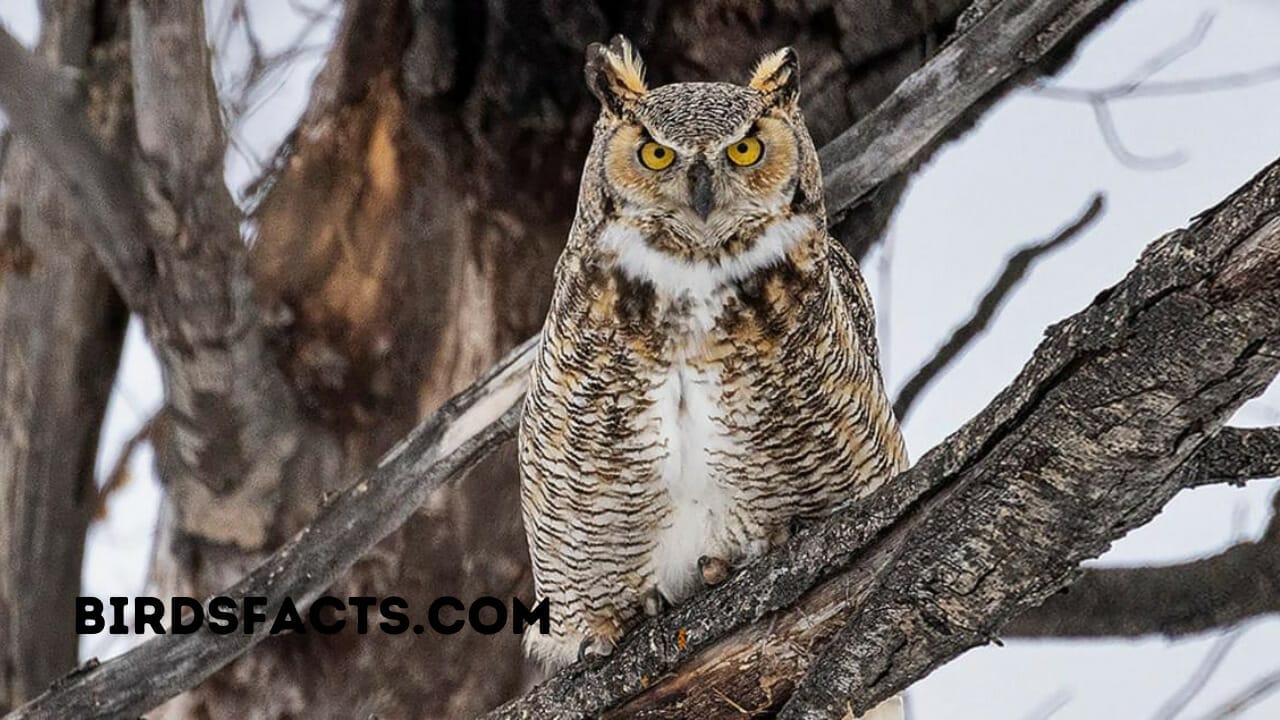In the heart of America, Kansas is Home to an array of intriguing and mysterious birds of prey – owls. These nocturnal creatures are a vital part of the Kansas ecosystem And can be found throughout the state. This article will Delve into the Fascinating world of owls in Kansas, exploring their habitats and Species and how you can spot these elusive birds.

Owls in Kansas
Why Kansas is an Ideal Habitat for Owls
Kansas provides a Diverse range of habitats for owls, from dense forests and wetlands to Vast prairies and grasslands. This diverse landscape offers Ample opportunities for owls to find suitable nesting sites, hunt for prey, and Raise their young.
The Importance of Owls in the Kansas Ecosystem
Owls play a crucial role in The ecosystem by controlling populations of rodents, insects, And other small mammals. Their Presence helps maintain a healthy balance within the food chain And contributes to the environment’s Overall health.
The Fascinating Species of Owls in Kansas
Eastern Screech-Owl
The Eastern Screech-Owl is a Small, well-camouflaged owl in wooded Kansas areas. They are known for their Distinctive call, which resembles a horse’s whinny.

Eastern Screech-Owl
Great Horned Owl
As one of the most widely Distributed owls in the Americas, the Great Horned Owl is a formidable Predator. With its large size and powerful talons, this Owl can take Down prey much more Extensively than itself, including rabbits and skunks.

Great Horned Owl
Snowy Owl
A rare sight in Kansas, the Snowy Owl is an Arctic species that occasionally ventures south during irruption years. These beautiful birds can be recognized by their striking white plumage and large size.

Snowy Owl
Barred Owl
Preferring dense Forests near water, the Barred Owl is a resident Species in eastern Kansas. Their deep, hooting call is familiar in the region’s Forests.
Long-Eared Owl
These Slender, medium-sized owls Roost in dense foliage or coniferous trees. Their piercing Yellow eyes And long, ear-like tufts make them easy to identify.
Short-Eared Owl
Short-Eared Owls are Primarily found in open grasslands and prairies, hunting for small mammals During dusk and Dawn. Their distinctive dark eye patches and short ear tufts Set them apart from Other owl species.
Burrowing Owl
As the name Suggests, Burrowing Owls are Unique in that they nest in underground burrows, often abandoned by Prairie dogs or other small mammals. These small, long-legged owls Can be spotted standing near their burrows in Grassland areas across Kansas.
Northern Saw-Whet Owl
The Northern Saw-Whet Owl is a Small, elusive species that can be found in dense forests across Kansas. They are Named for their unique call, similar to a sharpened Saw.
Owl Watching in Kansas
Tips for Successful Owl Watching
Owl watching can be a Thrilling experience, but it requires patience and respect for these nocturnal Creatures. To increase your chances of spotting an owl, follow these Tips:
- Go out during dusk or Dawn when owls are most active.
- Be as quiet as possible To avoid scaring the owls away.
- Use binoculars or a Spotting scope to observe from a distance.
- Learn the different Owl calls to help identify the species you encounter.
- Dress in dark, inconspicuous Clothing to blend into your surroundings.

Owl Watching in Kansas
Best Locations for Owl Spotting
Some of the top locations for Owl Watching in Kansas include the following:
- Quivira National Wildlife Refuge
- Cheyenne Bottoms Wildlife Area
- Tallgrass Prairie National Preserve
- Clinton State Park
- Milford Nature Center and Wildlife Area
The Role of Conservation in Kansas
Threats to Owl Populations
Owl populations in Kansas face a Variety of threats, including habitat loss, climate change, and human Interference. Pesticides and rodenticides can also Negatively Impact owl populations by poisoning their prey.
Conservation Efforts and Organizations
Conservation Organizations in Kansas are working tirelessly to protect owls and their Habitats. Initiatives such as Habitat restoration, public education, and monitoring programs help Ensure that future generations can enjoy these Magnificent birds. Some Notable organizations include the Kansas Ornithological Society, Audubon of Kansas, and The Nature Conservancy in Kansas.
Conclusion
Owls are an Essential and fascinating part of the Kansas ecosystem. Their Presence Benefits the environment by controlling populations of small mammals and Insects. By learning about the various species of owls in Kansas and Supporting conservation efforts, we can contribute to their continued Survival and appreciate these mysterious creatures in their natural habitats.
Frequently Asked Questions
How many species of owls can be found in Kansas?
There are at least Eight species of owls known to reside in Kansas.
Where can I go Owl watching in Kansas?
Some top locations For Owl watching in Kansas include Quivira National Wildlife Refuge, Cheyenne Bottoms Wildlife Area, Tallgrass Prairie National Preserve, Clinton State Park, and Milford Nature Center and Wildlife Area.
What is the best time to observe owls?
Owls are most active During dusk and Dawn, making these times the best for observing Them.
How can I help protect owls in Kansas?
Supporting local Conservation organizations, participating in habitat restoration projects, And educating others about the importance of owls in the ecosystem Are great ways to help protect owl populations.
Are owls dangerous to humans?
While owls are typically Not dangerous to humans, they are wild animals and should be Respected. Keep a safe distance when observing owls in their Natural habitat and avoid disturbing them.
Further Reading
You may also check out:
- birds behind glasses of water
- junco small black bird with white belly
- orange breasted bird
- small black bird with white belly
- iremoval pro
Thank you for reading!








